X-treme Sports!

This section Dedicates the fun, dangerous world of extreme sports, If you Have any videos of you doing whacked out stunts please submit them to us and we will be glad to show your videos and pictures to the rest of the world.
It is difficult to determine exactly when the term extreme sports came to refer to certain modern sports, but many believe it can be traced to the early 1970s, when rock climbing and marathon running—then considered extreme—gained popularity. Several reasons have been cited for the growth of extreme sports since that time.
Extreme sports may have gained popularity in the late 20th century as a reaction to the increased safety of modern life. Lacking a feeling of danger in their everyday activities, people may have felt compelled to seek out danger or risk Another reason for increased participation in extreme sports is enhanced sports technology. For example, the invention of sticky rubber-soled climbing shoes and artificial climbing walls broadened the appeal of rock climbing. And advances in ski design allowed more skiers to attempt extreme feats previously thought impossible.
Some observers credit television and movies and cult heros like Bam Margera and Tony Hawk for defining what extreme sports are as well as popularizing them. Television coverage of competitions and events has brought extreme sports and their participants more attention. The televised "X Games" and the Olympics are just two examples. As more people become aware of extreme sports, the activities gain more enthusiasts. One result of the growing interest is that those who pride themselves on participating in challenging, cutting-edge activities are constantly searching for new ways to test themselves. This ensures the continuing development of newer extreme sports.
Extreme sports allows and encourages individual creativity in the innovation of new maneuvers and in the stylish execution of existing techniques. Before enthusiasts attempt risky stunts, they must know their own physical abilities and understand how well they can block the natural instinct of fear. Extreme sports enthusiasts also must recognize the physical limitation of their equipment. Participants should have experience in whatever activity they are taking to an extreme level, and must know what to do in the event of an emergency.
It is difficult to determine exactly when the term extreme sports came to refer to certain modern sports, but many believe it can be traced to the early 1970s, when rock climbing and marathon running—then considered extreme—gained popularity. Several reasons have been cited for the growth of extreme sports since that time.
Extreme sports may have gained popularity in the late 20th century as a reaction to the increased safety of modern life. Lacking a feeling of danger in their everyday activities, people may have felt compelled to seek out danger or risk Another reason for increased participation in extreme sports is enhanced sports technology. For example, the invention of sticky rubber-soled climbing shoes and artificial climbing walls broadened the appeal of rock climbing. And advances in ski design allowed more skiers to attempt extreme feats previously thought impossible.
Some observers credit television and movies and cult heros like Bam Margera and Tony Hawk for defining what extreme sports are as well as popularizing them. Television coverage of competitions and events has brought extreme sports and their participants more attention. The televised "X Games" and the Olympics are just two examples. As more people become aware of extreme sports, the activities gain more enthusiasts. One result of the growing interest is that those who pride themselves on participating in challenging, cutting-edge activities are constantly searching for new ways to test themselves. This ensures the continuing development of newer extreme sports.
Extreme sports allows and encourages individual creativity in the innovation of new maneuvers and in the stylish execution of existing techniques. Before enthusiasts attempt risky stunts, they must know their own physical abilities and understand how well they can block the natural instinct of fear. Extreme sports enthusiasts also must recognize the physical limitation of their equipment. Participants should have experience in whatever activity they are taking to an extreme level, and must know what to do in the event of an emergency.
Skate Boarding
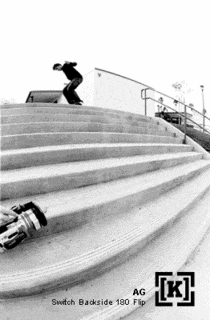
This Page is To all you Who love skateboarding, if there is something missing you would like to see it added here let us know, or if you have home footage send it in to us and we will post it.
Skate Videos
My story, Sean Haygood
As a young Teen I found out about skateboarding from some friends and it instantly grew on me Skate boarding became a important foundation in my life for 8 years, 3 years ago i broke my ankle and Fractured it 3 times, I now have chronic pain some days in my right ankle at 22 I still skate some days but I am no where near the skill level I once was at. So i deiced to quit trying to get sponsored and go with my other talent, which is computers and hand drawing. Yet i Still skate for fun and it was at one point a huge part of my life and gave me great exercise and kept me out of trouble, I support Skate boarding fully, It kept me out of drugs and kept me busy during my youth, Parents for those who think that your child should play football or baseball or any other Coaching orientated local sport instead of skate boarding, But your child wants to skate. If they dont do well in Teams i would suggest that you encourage skateboarding to them. It helps the children fit into social rolls and can give a since of fulfillment. On a football team or any other sports team if you play and your not as good as the other players you sit on the side lines and chances are, that the child will not feel to good about them selves. With Extreme sports you Dont have a coach who screams and yells at you for every mistake, and they can learn at their own pace. Other kids who skate locally hang out at skate parks and even Walgreens parking lot like we did haha. This can help with a child's self esteem and can have great affects on the developmental stages of being in social circles. Today's Youth are more and more overweight and at a young age is not good for health as the person ages. This sport is great for the heart and keeps the body busy and healthly. So once again if you think that just because you child dont want to be playing after school sports or Township sports they are making wrong choices, They are not and Skateboarding is just as good in benefits for children as playing Baseball or any other sport.
Skate Videos
My story, Sean Haygood
As a young Teen I found out about skateboarding from some friends and it instantly grew on me Skate boarding became a important foundation in my life for 8 years, 3 years ago i broke my ankle and Fractured it 3 times, I now have chronic pain some days in my right ankle at 22 I still skate some days but I am no where near the skill level I once was at. So i deiced to quit trying to get sponsored and go with my other talent, which is computers and hand drawing. Yet i Still skate for fun and it was at one point a huge part of my life and gave me great exercise and kept me out of trouble, I support Skate boarding fully, It kept me out of drugs and kept me busy during my youth, Parents for those who think that your child should play football or baseball or any other Coaching orientated local sport instead of skate boarding, But your child wants to skate. If they dont do well in Teams i would suggest that you encourage skateboarding to them. It helps the children fit into social rolls and can give a since of fulfillment. On a football team or any other sports team if you play and your not as good as the other players you sit on the side lines and chances are, that the child will not feel to good about them selves. With Extreme sports you Dont have a coach who screams and yells at you for every mistake, and they can learn at their own pace. Other kids who skate locally hang out at skate parks and even Walgreens parking lot like we did haha. This can help with a child's self esteem and can have great affects on the developmental stages of being in social circles. Today's Youth are more and more overweight and at a young age is not good for health as the person ages. This sport is great for the heart and keeps the body busy and healthly. So once again if you think that just because you child dont want to be playing after school sports or Township sports they are making wrong choices, They are not and Skateboarding is just as good in benefits for children as playing Baseball or any other sport.
BMX
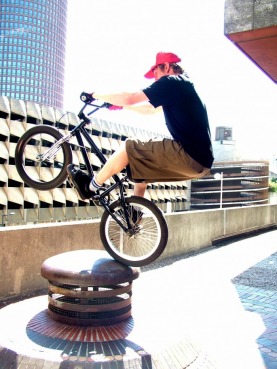
BMX Videos
reestyling can be traced back to the San Diego teenagers Kyle Miller, Bob Haro, John Swanguen and William Crazy Lacy Furmage. In late 1976, the three spent a lot of time on their BMX bikes at Skateboard Heaven, a concrete skatepark in their hometown. They were giving the skateboarders a run for their money, duplicating and topping a lot of the insane tricks. Soon they moved out of the skate pools and onto the streets, where they started developing new tricks that became the discipline known as "flatland", with the objective of blowing people's minds.
In the fall of 1977, Haro, then nineteen, left San Diego for a staff artist position at BMX Action magazine in Torrance, California. Every chance he got, he would practice his freestyle moves. It wasn't long before Haro's pastime caught the eye of fourteen year old Robert Louis Osborn (known as "R.L. Osborn"), and the two became friends and riding partners. With all the trick riding going around the BMX Action offices, how-to articles started popping up in the magazine. Here's a quote from the first freestyle how-to ever printed, which appeared in the January/February 1979 issue: “Trick riders are the ballet dancers of BMX. They are a concert of perfect control; rider and bike joined in a symmetry of choreographed fluid movement.” [1] The how-to showed how to do a “Rock Walk”, spinning the rFreestyling can be traced back to the San Diego teenagers Kyle Miller, Bob Haro, John Swanguen and William Crazy Lacy Furmage. In late 1976, the three spent a lot of time on their BMX bikes at Skateboard Heaven, a concrete skatepark in their hometown. They were giving the skateboarders a run for their money, duplicating and topping a lot of the insane tricks. Soon they moved out of the skate pools and onto the streets, where they started developing new tricks that became the discipline known as "flatland", with the objective of blowing people's minds.
In the fall of 1977, Haro, then nineteen, left San Diego for a staff artist position at BMX Action magazine in Torrance, California. Every chance he got, he would practice his freestyle moves. It wasn't long before Haro's pastime caught the eye of fourteen year old Robert Louis Osborn (known as "R.L. Osborn"), and the two became friends and riding partners. With all the trick riding going around the BMX Action offices, how-to articles started popping up in the magazine. Here's a quote from the first freestyle how-to ever printed, which appeared in the January/February 1979 issue: “Trick riders are the ballet dancers of BMX. They are a concert of perfect control; rider and bike joined in a symmetry of choreographed fluid movement.” [1] The how-to showed how to do a “Rock Walk”, spinning the rear tire around 180 degrees and pulling the front tire back around another 180 degrees to complete a 360 degree circle, so it looks like your bike is walking. The article included photos of Bob Haro demonstrating the trick. Towards the end of 1979, the first two organized freestyle team was created — the BMX Action Trick Team and Super Style II. That came about when Kyle Miller, BMX rookie who made it into the spotlight with his special move the "Kyl-a-mov-a", and Bob Osborn, BMX Action's publisher and R.L. Osborn's father, and Gene Roden, who was with the American Bicycle Association (ABA), had a conversation about what to do for a BMX show scheduled during an intermission at a motocross event in Southern California's Anaheim Stadium. Roden was in charge of coordinating the presentation. Crazy lacy and Tony Ray Davis rode for Vans and SE racing in 1982. Bob Osborn and Kyle Miller were best of friends and had the idea that Bob Haro might do some tricks at the intermission, but that was quickly dismissed when he remembered the trick rider Kyle Miller was injured while showing his signature trick. But R.L. Osborn, Bob Osborn's son and Bob Haro's protegé, had enough tricks to handle a show on his own. As it turned out, the demo was scrapped at the last minute. But the trick team idea was firmly planted in the minds of Bob Haro and the senior and junior Osborns, and the BMX Action Trick Team was born in the winter of 1979.
Snow Sports
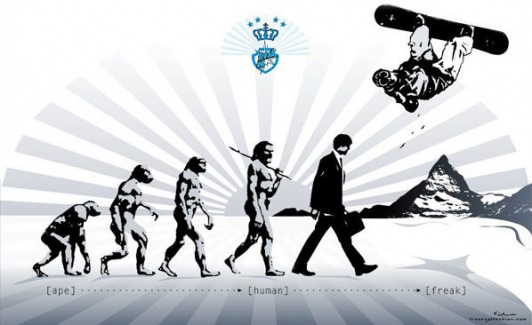
Snow Sport Videos
Many crude versions of the snowboard were made up to 100 years before the first commercially manufactured model, but it is believed that the first snowboard was invented and manufactured in Utah beginning in the early 1970s.[citation needed] This claim was commemorated in 2007 by the United States mint when a snowboard theme was among the three semi-final designs of the Utah state quarter.[1]
There are also claims that the first snowboard was the Snurfer (a portmanteau of snow and surfer), originally designed by Sherman Poppen for his daughter in 1965 in Muskegon, Michigan.[2] Poppen’s Snurfer started to be manufactured as a toy the following year. It was essentially a skateboard without wheels, steered by a hand-held rope, and lacked bindings, but had provisions to cause footwear to adhere.[3] During the 1970s and 1980s as snowboarding became more popular, pioneers such as Dimitrije Milovich, Sonny Sini, Jake Burton Carpenter (founder of Burton Snowboards from Londonderry, Vermont), Tom Sims (founder of Sims Snowboards) and Mike Olson (founder of Gnu Snowboards) came up with new designs for boards and mechanisms that slowly developed into the snowboards and other related equipment that we know today.[3]
Dimitrije Milovich, an east coast surfer, had the idea of sliding on cafeteria trays. From this he started developing his snowboard designs. In 1972, he started a company called the Winterstick, which was mentioned in 1975 by Newsweek magazine. The Winterstick was based on the design and feel of a surfboard, but worked the same way as skis.[4] In the spring of 1976 Welsh skateboarders Jon Roberts and Pete Matthews developed a Plywood deck with foot bindings for use on the Dry Ski Slope at the school camp, Ogmore-by-Sea, Wales. UK. Further development of the board was limited as Matthews suffered serious injury while boarding at Ogmore and access for the boarders was declined following the incident. The 'deck' was much shorter than current snow boards. Bevelled edges and a convex, polyurethane varnished bottom to the board, allowed quick downhill movement, but limited turning ability.
Motocross
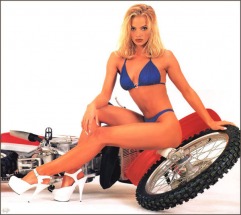
Many crude versions of the snowboard were made up to 100 years before the first commercially manufactured model, but it is believed that the first snowboard was invented and manufactured in Utah beginning in the early 1970s.[citation needed] This claim was commemorated in 2007 by the United States mint when a snowboard theme was among the three semi-final designs of the Utah state
Motocross Videos
There are also claims that the first snowboard was the Snurfer (a portmanteau of snow and surfer), originally designed by Sherman Poppen for his daughter in 1965 in Muskegon, Michigan.[2] Poppen’s Snurfer started to be manufactured as a toy the following year. It was essentially a skateboard without wheels, steered by a hand-held rope, and lacked bindings, but had provisions to cause footwear to adhere.[3] During the 1970s and 1980s as snowboarding became more popular, pioneers such as Dimitrije Milovich, Sonny Sini, Jake Burton Carpenter (founder of Burton Snowboards from Londonderry, Vermont), Tom Sims (founder of Sims Snowboards) and Mike Olson (founder of Gnu Snowboards) came up with new designs for boards and mechanisms that slowly developed into the snowboards and other related equipment that we know today.[3]
Dimitrije Milovich, an east coast surfer, had the idea of sliding on cafeteria trays. From this he started developing his snowboard designs. In 1972, he started a company called the Winterstick, which was mentioned in 1975 by Newsweek magazine. The Winterstick was based on the design and feel of a surfboard, but worked the same way as skis.[4] In the spring of 1976 Welsh skateboarders Jon Roberts and Pete Matthews developed a Plywood deck with foot bindings for use on the Dry Ski Slope at the school camp, Ogmore-by-Sea, Wales. UK. Further development of the board was limited as Matthews suffered serious injury while boarding at Ogmore and access for the boarders was declined following the incident. The 'deck' was much shorter than current snow boards. Bevelled edges and a convex, polyurethane varnished bottom to the board, allowed quick downhill movement, but limited turning ability.
New Age Sky Diving (Wing Suits)
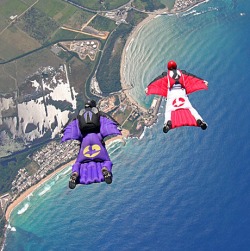
Wing Suit Videos
Watch these guys Fly they are amazing !
Wingsuit flying is the art of flying the human body through the air using a special jumpsuit, called a wingsuit, that shapes the human body into an airfoil which can create lift. The wingsuit creates the airfoil shape with fabric sewn between the legs and under the arms. It is also known by the public as a birdman suit or squirrel suit.
A wingsuit can be flown from any point that provides sufficient altitude to glide through the air, such as skydiving aircraft or BASE jumping exit points.
The wingsuit flier wears parachute equipment designed for skydiving or BASE jumping. The flier will deploy the parachute at a planned altitude and unzip the arm wings, if necessary, so they can reach up to the control toggles and fly to a normal
Random Extremeness
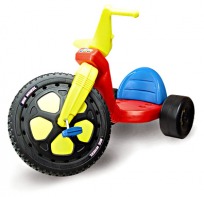
Big Wheels Stunts! Videos
This is Awesome Watch these guys do tricks on huge ramps with big wheels
I had to add it to the extremes because it is.
A Big Wheel is a type of tricycle, usually made of plastic, with an oversized front wheel, that rides very low to the ground. Introduced by Louis Marx and Company in 1969, the Big Wheel was a very popular toy in the 1970s in the United States, partly because of its low cost and partly because consumer groups said it was a safer alternative to the traditional tricycle or bicycle.The design was quickly imitated, under a variety of brand names. Although Big Wheel was a registered trademark, it was frequently used as a generic name for any toy whose design resembled that of Marx. Marx sold the Big Wheel brand name and molds in the early 1970s to Empire Plastics, makers of the Power Cycle brand, which was Marx's biggest competitor.By the late 1990s, few manufacturers were making these toys, and Empire filed for bankruptcy in 2001. The Big Wheel brand was reintroduced under new ownership in 2003.
This is Awesome Watch these guys do tricks on huge ramps with big wheels
I had to add it to the extremes because it is.
A Big Wheel is a type of tricycle, usually made of plastic, with an oversized front wheel, that rides very low to the ground. Introduced by Louis Marx and Company in 1969, the Big Wheel was a very popular toy in the 1970s in the United States, partly because of its low cost and partly because consumer groups said it was a safer alternative to the traditional tricycle or bicycle.The design was quickly imitated, under a variety of brand names. Although Big Wheel was a registered trademark, it was frequently used as a generic name for any toy whose design resembled that of Marx. Marx sold the Big Wheel brand name and molds in the early 1970s to Empire Plastics, makers of the Power Cycle brand, which was Marx's biggest competitor.By the late 1990s, few manufacturers were making these toys, and Empire filed for bankruptcy in 2001. The Big Wheel brand was reintroduced under new ownership in 2003.
People Climb things, Some times Gravity Wins!
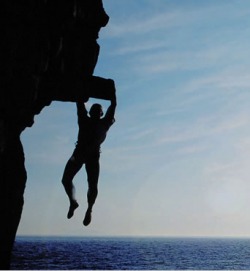
Climbing and Failing Videos
Rock climbing is a sport in which participants climb up or across natural rock formations or man-made rock walls with the goal of reaching the summit of a formation or the endpoint of a pre-defined route. Rock climbing is similar to scrambling (another activity involving the scaling of hills and similar formations), but climbing is generally differentiated by its need for the use of the climber's hands to hold his or her own weight and not just provide balance.
Rock climbing is a physically and mentally demanding sport, one that often tests a climber's strength, endurance, agility, and balance along with his or her mental control. It can be a dangerous sport and knowledge of proper climbing techniques and usage of specialized climbing equipment is crucial for the safe completion of routes. Because of the wide range and variety of rock formations around the world rock climbing has been separated into several different styles and sub-disciplines that are described below.[1]